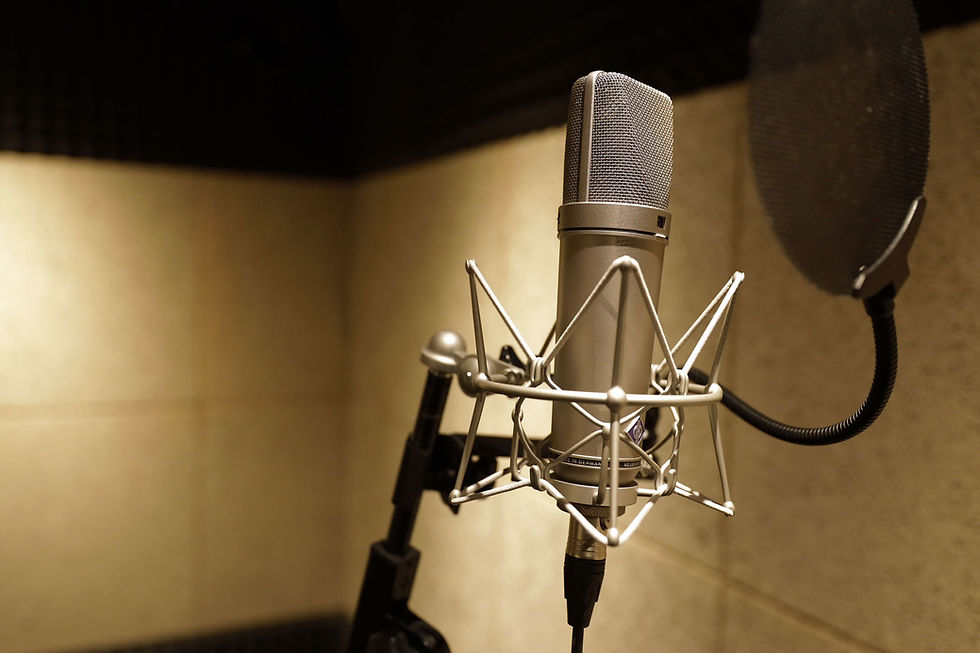Unlocking the Perfect Sound: A Guide to Choosing the Right Microphone for Your Recording Needs
- Santino Onyeme

- Mar 23, 2023
- 3 min read
Updated: Mar 25, 2023

If you are a musician, podcaster, voice actor, or any other kind of audio producer, you know how important it is to have a good microphone for your recording needs. But with so many options available on the market, how do you choose the right one for your project? In this blog post, we will give you some tips and guidelines to help you make an informed decision.
Type Matters: Dynamic vs. Condenser Microphones
The first thing you need to consider is the type of microphone. There are two main types: dynamic and condenser. Dynamic microphones are more durable and less sensitive to background noise and feedback. They are ideal for live performances and loud environments. Condenser microphones are more delicate and sensitive to sound nuances and details. They require phantom power to operate and are better suited for studio recordings and quiet settings.
Picking the Right Polar Pattern: Cardioid, Omnidirectional, Bidirectional, and Supercardioid
The second thing you need to consider is the polar pattern of the microphone. This refers to how the microphone picks up sound from different directions. There are four common polar patterns: cardioid, omnidirectional, bidirectional, and super-cardioid. Cardioid microphones pick up sound mostly from the front and reject sound from the sides and back. They are good for isolating vocals and instruments from ambient noise. Omnidirectional microphones pick up sound equally from all directions. They are good for capturing natural room acoustics and ambient sounds. Bidirectional microphones pick up sound from the front and back but reject sound from the sides. They are good for recording interviews or duets where two people face each other. Super-cardioid microphones pick up sound mostly from the front but also slightly from the sides and back. They have a narrower pickup angle than cardioid microphones and offer more rejection of off-axis sounds.
Frequency Response: Flat or Shaped? Which Microphone is Right for You?
The third thing you need to consider is the frequency response of the microphone. This refers to how well the microphone reproduces different frequencies of sound from low to high. Some microphones have a flat frequency response, which means they capture all frequencies equally without boosting or cutting any of them. These microphones are good for recording a wide range of sources with accuracy and clarity. Other microphones have a shaped frequency response, which means they emphasize or attenuate certain frequencies to enhance or reduce certain characteristics of the sound source. These microphones are good for recording specific sources that benefit from some coloration or correction.
Budget and Personal Preference: Finding Your Perfect Microphone
The fourth thing you need to consider is your budget and personal preference. Microphones vary in price depending on their quality, features, and brand reputation. You should always try to get the best microphone that you can afford within your budget range but also keep in mind that different microphones may suit different tastes and styles better than others. You should always test out different microphones before buying them if possible or read reviews online from other users who have used them before.
Choosing the Right Microphone Made Easy: Tips and Guidelines to Help You Make an Informed Decision
Choosing the right microphone for your recording needs can be a daunting task but it doesn't have to be if you follow the tips and guidelines we have provided in this blog post. Remember that there is no one-size-fits-all solution when it comes to microphones; what works well for one person may not work well for another depending on their project goals, preferences, and environmental factors.




Comments